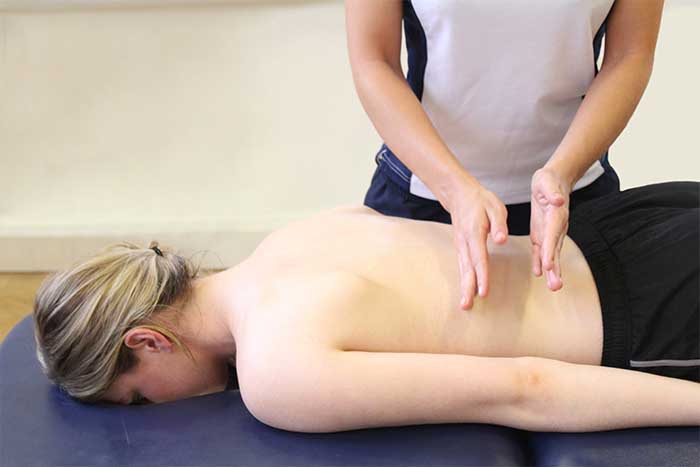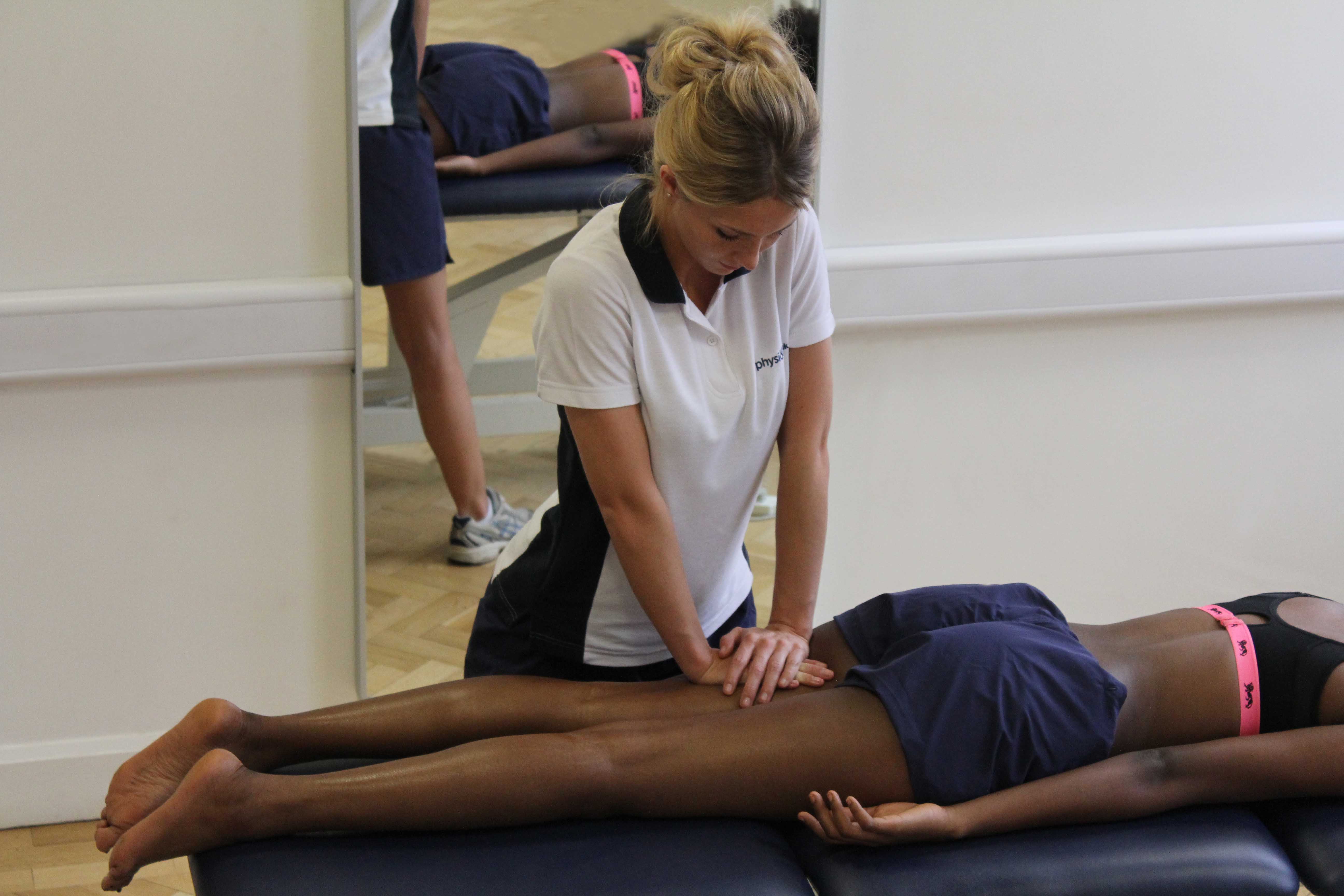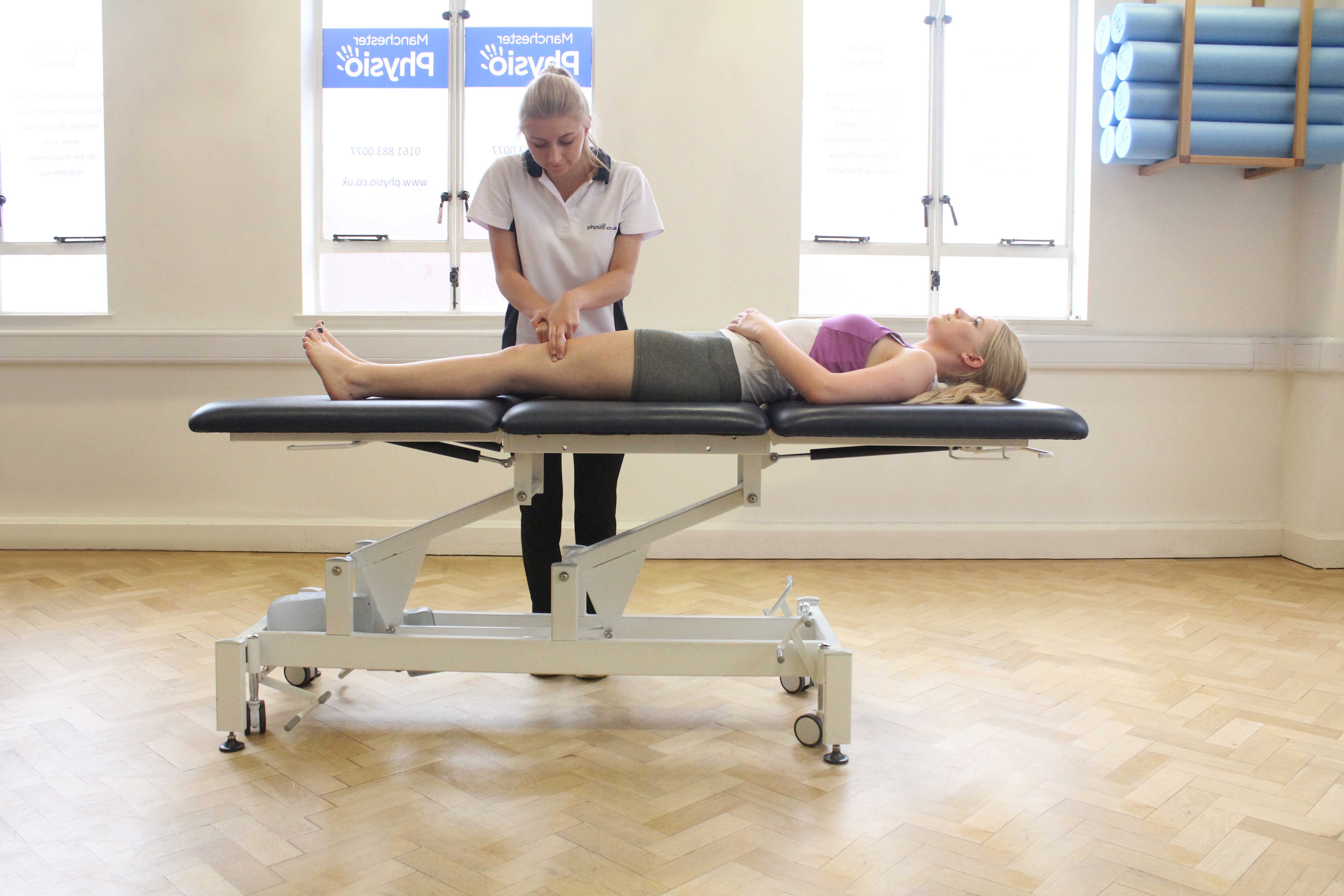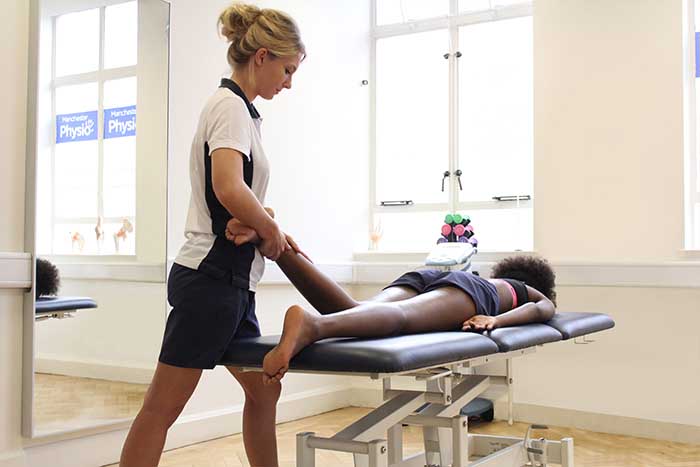A common benefit gained through massage is decreased cortisol. Decreased cortisol is the reduction in stress related hormones being circulated around the body. A variety of techniques can be used throughout a massage to help decrease cortisol. Cortisol is most commonly known as the stress hormone as it often increases symptoms of stress, anxiety and depression. Our massage therapists at Physio.co.uk decrease cortisol through massage to help reduce stress, relieve anxiety and increase relaxation.
What is decresed cortisol?
Cortisol is a negative hormone that is transported around the body within the blood flow. Cortisol is produced in the adrenal gland which is located on top of the kidneys. A part of the brain called the hypothalamus stimulates the release of cortisol. Cortisol is secreted into the blood flow and transported around the body increasing stress levels. Small amounts of cortisol can be healthy for a person as it is used to maintain homeostasis and for the "fight or flight" response. Too much cortisol can negatively affect a person in many different ways. Negative effects cortisol has include increased anxiety and depression, suppression of the immune system and a decrease in bone formation. When cortisol decreases, all negative effects it can have on a person are reduced and feelings of relaxation can occur. A massage helps to reduce the negative effects cortisol can have on a person and replace the negative hormones with positive hormones.

What are the benefits of decreased cortisol?
Various benefits can be gained when cortisol is decreased. The most common benefits of decreased cortisol include:
 Above: Deept tissue massage can help boost endorphins and reduce cortisol levels.
Above: Deept tissue massage can help boost endorphins and reduce cortisol levels.Decreased cortisol can increase healing. Cortisol is often known to suppress the immune system and lower the body's response to injury. Lowering the body's response to injury means that the inflammatory response and healing of injuries are slowed down and lengthened. A massage helps to decrease cortisol levels within the body. Decreased cortisol levels means that the body's immune system and response to injury are both improved. An improvement in the immune system and response to injury can increase healing as the inflammatory response and healing process both speed up.
Stress can be reduced when cortisol is decreased. Cortisol is most commonly known as the stress hormone. This is because when too much cortisol is secreted into the blood flow, an increase in symptoms such as stress, fear, pain and anxiety occurs. During a massage, the stimulation of the autonomic nervous system occurs. The autonomic system trigger the release of positive hormones around the body that help replace negative hormones. The replacement of the negative hormone cortisol lowers the level circulated around the body. A reduction in cortisol being circulated around the body helps to decrease stress and other negative symptoms of cortisol.
Increased relaxation is a common benefit gained when cortisol is decreased. Cortisol is known to increase stress and pain levels disabling a person to relax. When cortisol is decreased, stress and pain levels are also reduced. A reduction in stress and pain then allows a person to psychologically relax. Increasing relaxation can improve a person's sleeping, energy levels and overall positive mood.
What techniques are used to decrease cortisol?
A wide range of techniques are used to decrease cortisol. Techniques often used to decreased cortisol include:
 Above: Massage can decrease the levels of cortisol in the body which is closely related to stress and anxiety.
Above: Massage can decrease the levels of cortisol in the body which is closely related to stress and anxiety.Deep strokes are often used to decrease cortisol. Deep strokes involve applying a deep, firm pressure to the skin using flattened hands and fingers. Deep strokes help to reduce muscular stress and tension decreasing pain. Pain can increase stress levels as it restricts a person from specific movements and normal daily activities. Cortisol can often be released in response to increases in stress. When cortisol is released, pain and stress can further increase. As deep strokes reduce pain, the levels of cortisol released due to stress are also decreased. Deep strokes can therefore decrease cortisol.
Cortisol can be decreased using compression. Compression is a technique used to increase circulation and decrease tension, stress and tightness within muscles. A firm pressure is used within compression enabling the therapist to get deeper into the muscle tissues. Compression encourages an increase in relaxation as circulation is improved. An increase in relaxation occurs as levels of positive hormones such as serotonin and dopamine are increased. Positive hormones can replace the negative hormone cortisol to help decrease stress and depression and increase relaxation. Increasing positive hormones through compression helps to decrease cortisol.
Wringing can decrease cortisol. Wringing involves pulling soft tissues with flattened hands and fingers in opposite directions. Wringing helps to reduce tightness and restriction that can increase pain. Stress is increased when pain occurs. An increase in stress happens due to an increase in cortisol levels that are produced in response to pain. Wringing decreases pain by reducing muscle tightness and restriction. A decrease in pain lowers the levels of cortisol produced. Decreasing production of cortisol results in less being secreted and circulated around the body within the blood flow.

What situation would decreased cortisol help?
Decreased cortisol can help in many ways. The most common situations decreased cortisol can help include:
Decreased cortisol can help reduce acute pain. Pain can occur for various reasons. The most common causes of pain are injury, surgery and muscular tightness. Acute pain can restrict movement, making normal daily activities hard to do. A restriction in movement can increase stress levels. Increasing stress can further increase pain. Cortisol is released when pain and stress levels rise, worsening their effects. During massage, a decrease in cortisol levels occur. A decrease in cortisol levels helps to reduce stress. A reduction in stress helps to relieve symptoms of pain and increase relaxation.
Muscle tone can be reduced when cortisol is decreased. High muscle tone can negatively affect a person as muscle tend to be full of tension and often very tight. When muscles are tight and full of tension, the range of movement the muscle normally has is reduced. When range of movement is reduced, an increase in cortisol is released due to an increase in stress levels. Increasing cortisol causes tension and tightness to rise further, increasing muscle tone. A decrease in cortisol helps to reduce tension and tightness by relieving stress levels. A decrease in tightness and tension reduces muscle tone.
Decreased cortisol can help post injury. When cortisol levels are high, inflammation and healing times are lengthened. After an injury has occurred, the body's natural response to repair damaged tissues is poor and inefficient. A decrease in cortisol levels being circulated around the body helps to reduce the time taken for injuries to heal. Decreased cortisol also allows the repair stage of the healing process to work more efficiently, increasing its effectiveness. The inflammation and repair stages of the healing process both speed up, reducing the effects of injury more quickly.
Summary
Decreased cortisol is the reduction in the negative hormone being circulated around the body. A range of benefits can be gained when cortisol is decreased including increased healing, decreased stress and relaxation. Techniques such as deep strokes, compression and wringing are commonly used to help decrease cortisol. Decreased cortisol can help acute pain, high muscle tone and post injury. Our massage therapists at Physio.co.uk decrease cortisol through massage to help reduce stress, relieve pain and decrease depression.
How can I arrange a sports massage to decrease cortisol?
The easiest way to arrange a sports massage to decrease cortisol at Physio.co.uk is to email us at office@physio.co.uk or call us on 0800 033 7800.
Alternatively if you have any questions please feel free to contact us.
We offer a 7 day service and provide home and clinic appointments.

 0330 088 7800
0330 088 7800


































